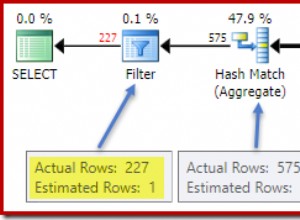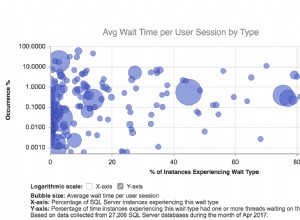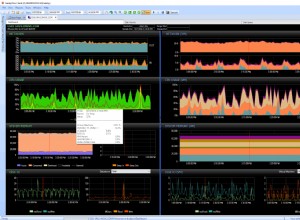Quando aggiungi un order by a un aggregato utilizzato come funzione della finestra che l'aggregazione si trasforma in un "conteggio progressivo" (o qualsiasi aggregato utilizzato).
Il count(*) restituirà il numero di righe fino a "quella corrente" in base all'ordine specificato.
La query seguente mostra i diversi risultati per gli aggregati utilizzati con un order by . Con sum() invece di count() è un po' più facile da vedere (secondo me).
with test (id, num, x) as (
values
(1, 4, 1),
(2, 4, 1),
(3, 5, 2),
(4, 6, 2)
)
select id,
num,
x,
count(*) over () as total_rows,
count(*) over (order by id) as rows_upto,
count(*) over (partition by x order by id) as rows_per_x,
sum(num) over (partition by x) as total_for_x,
sum(num) over (order by id) as sum_upto,
sum(num) over (partition by x order by id) as sum_for_x_upto
from test;
risulterà in:
id | num | x | total_rows | rows_upto | rows_per_x | total_for_x | sum_upto | sum_for_x_upto
---+-----+---+------------+-----------+------------+-------------+----------+---------------
1 | 4 | 1 | 4 | 1 | 1 | 8 | 4 | 4
2 | 4 | 1 | 4 | 2 | 2 | 8 | 8 | 8
3 | 5 | 2 | 4 | 3 | 1 | 11 | 13 | 5
4 | 6 | 2 | 4 | 4 | 2 | 11 | 19 | 11
Ci sono altri esempi nel manuale di Postgres




